G. L. Pease
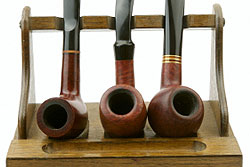 A week or so ago, as I sat on the patio with book and tea, puffing on an old, rather undistinguished billiard—one that is not particularly well constructed, in today’s terms—filled with a recently made tobacco, and having an absolutely brilliant smoke, it occurred to me that I was experiencing the impossible. The pipe does not have a “wide-open draw.” In fact, its airway is so narrow as to barely accept a thin pipe cleaner with a little cursing and coaxing. The bowl was probably machine made. Its wood is unremarkable, other than the fact that it lacks bald spots (I wish I could say the same thing for my own head at this point), and presents no apparent fills. The pipe’s mouthpiece is a bit thick, a bit round, and doesn’t quite fit securely between the teeth, meaning that my hand automatically reaches up to re-adjust it frequently.
A week or so ago, as I sat on the patio with book and tea, puffing on an old, rather undistinguished billiard—one that is not particularly well constructed, in today’s terms—filled with a recently made tobacco, and having an absolutely brilliant smoke, it occurred to me that I was experiencing the impossible. The pipe does not have a “wide-open draw.” In fact, its airway is so narrow as to barely accept a thin pipe cleaner with a little cursing and coaxing. The bowl was probably machine made. Its wood is unremarkable, other than the fact that it lacks bald spots (I wish I could say the same thing for my own head at this point), and presents no apparent fills. The pipe’s mouthpiece is a bit thick, a bit round, and doesn’t quite fit securely between the teeth, meaning that my hand automatically reaches up to re-adjust it frequently.
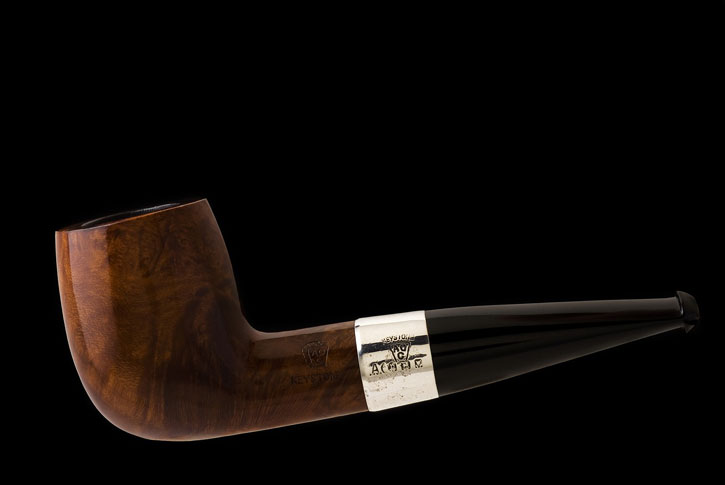
The tobacco was something I was exploring, a prototype blended just minutes before, and one that would certainly be called “green” by some of Cyberia’s self-professed tobacco experts. To make things worse, it was precisely the “wrong” sort of tobacco to be smoking in a pipe of this bowl format. All of these things, I am led to believe, should write a recipe for smoking disaster, not a brilliant smoke, and yet, a brilliant smoke is just what I was having. Interestingly, this was not an isolated case. I have had the good fortune of experiencing the apparently impossible quite often.
Though generally pretty good natured and laid back (get off the floor and stop laughing—really, I am), once in a while, something annoys me almost to the extent of water torture, flaming bamboo splinters under my fingernails, or a Justin Bieber concert. I might as well get it on the page up front. I’ve been suffering from flu for days, am explicitly cranky, and am likely indulging a bit of resultant cynicism whilst getting a few things off my dome. Air traffic control has predicted turbulence, so buckle your belts; the ride may get bumpy.
I’m perplexed by some of the over-wrought rhetoric that has, especially over the past decade, imposed its way increasingly into the exponentially growing body of online pipe literature. When given more than a cursory glance by even the most casually critical reader, some of these expressions, apparently intended to convey the author’s deep understanding of the pipe’s mysteries, would be found absolutely semantically void. Yet, they persist, and to some extent, seem to be escalating in frequency of use and general acceptance as somehow meaningful, being re-transmitted without consideration until they reach pandemic proportions, infecting the otherwise rational thoughts of the pipe smoking community at large.
 Every pipe being made today, it seems, is perfectly “engineered,” a term whose genesis with respect to pipe-making is difficult to identify, and which usually appears to mean only that a pipe is made to the same standards of internal construction that someone else uses, having been discovered through trial and error. Every pipe, it seems, is made from “only the finest briar.” Who’s making pipes from the firewood these makers reject?[1] Every pipe is made with stems “hand-cut to exacting standards for ultimate comfort.” Isn’t that special? Who, in his right mind, would choose to make a stem to such low standards that it would be intentionally uncomfortable? (My old billiard, notwithstanding. Its stem certainly could use a little help in that regard.) Every bowl coating is “neutral” and designed to ease the initial break-in process. Every pipe maker, newcomer and veteran alike, it seems, bears the title “artisan,” a term which, historically, simply denotes a worker in a skilled trade, and in this respect, it’s certainly accurate, but are there any individual pipe makers that command our attention who are not artisans in this traditional sense?
Every pipe being made today, it seems, is perfectly “engineered,” a term whose genesis with respect to pipe-making is difficult to identify, and which usually appears to mean only that a pipe is made to the same standards of internal construction that someone else uses, having been discovered through trial and error. Every pipe, it seems, is made from “only the finest briar.” Who’s making pipes from the firewood these makers reject?[1] Every pipe is made with stems “hand-cut to exacting standards for ultimate comfort.” Isn’t that special? Who, in his right mind, would choose to make a stem to such low standards that it would be intentionally uncomfortable? (My old billiard, notwithstanding. Its stem certainly could use a little help in that regard.) Every bowl coating is “neutral” and designed to ease the initial break-in process. Every pipe maker, newcomer and veteran alike, it seems, bears the title “artisan,” a term which, historically, simply denotes a worker in a skilled trade, and in this respect, it’s certainly accurate, but are there any individual pipe makers that command our attention who are not artisans in this traditional sense?
There are some exceptional artists making amazing pipes today. As well, there are some extraordinarily skilled craftsmen who don’t lay claim to any great artistic vision making exquisite, if somewhat conventional pipes. But, in either case, or anywhere in between, good stems, good wood, proper drilling are no longer things to be considered novel; they are the standards of practice amongst good pipe makers—or they should be—so using these attributes in an attempt to distinguish a maker’s work, at least with respect to hand-made pipes, seems at least redundant, if not just silly.
The problem is that this rhetoric is used cavalierly as little more than jargon to imply something larger than life, and, as is so often the case with language that helplessly finds itself lost in the vernacular’s lexicon, it has been freed from the inconvenient constraints of meaning, serving not at all to distinguish one pipe or one maker from another, but rather to attempt to elevate them all to some Olympian pantheon of godlike briar superheroes.
None of this is really new; it’s been going on for as long as there have been pipes, pipe-makers, pipe-smokers and the printing press (a mechanical device utilized to enable the broad distribution of the written word; the precursor to the Interwebs, for those who don’t recall it). Alfred Dunhill was arguably the most creative in his ability to twist the rudiments of briar and vulcanite into something extraordinary, canonizing a ball of rotting burl into sainthood with the implication that “dead” is the rarest and best root. (Briar is pretty much all dead by the time it’s harvested, chopped into bits, boiled and dried. If the burl dies in the ground, it doesn’t take long for bacteria, bugs, fungi and thermal stress to render it useless, making it all the more rare. Hear the screams, my fellows. Hear the screams.)
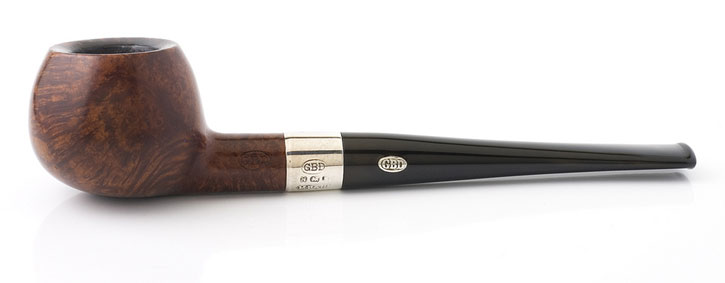
Those who have been obsessed with these magical little briar objects for any length of time, and that would be most who have read this far, those who have poured through old catalogues and magazines, will recall the same sort of hype applied to various patented inventions throughout the history of pipe making, all alleged to improve the experience of the pipe smoker, but intended, in reality, only to improve the marque’s sales figures over the competition.
But, the internet has fostered an entirely new flavour of credibility gap. False knowledge becomes embedded in culture through repetition, and never before in our history has it been so easy for so many to become instant experts, attempting to repeatedly douse every fire with the contents of their own buckets of rhetoric. We’ve all seen it, and have complained about it with respect to the ETS (Environmental Tobacco Smoke) fanatics, spouting impressive fountains of non-science and statistical manipulation to attempt to support a clearly scientifically unsupportable position. Yet we do the same thing, perhaps in a less damaging fashion, when we repeat the memes of thought-makers without questioning them. The list is long. For every one of these “truths,” there are often at least as many, often more rigorous exceptions. But, let’s not get bogged down in the factual swamp. Where’s the fun in that?
More optimistically, this restructuring of reality can be viewed in a positive light, as it may tend to indicate that our peaceful and once declining little pastime is facing some resurgence, becoming sufficiently popular to attract the attention of a few taste-makers, and we need some of that popularity if we are to keep the patient alive. And so, we offer our indulgence.
Many of my most treasured pipes are pretty normal looking things, with nothing in the form of internal contrivances, elaborate shapes, noteworthy grain or bowl coatings with “secret” recipes to enhance their desirability. They are pipes that would likely be passed by if displayed at a pipe show. Some of them are not drilled particularly perfectly, and certainly weren’t carefully “engineered” through advanced dynamic flow analysis techniques. Indeed, some of my best briars would be rendered all but invisible by the brilliant dazzle and glamour of the increasing number of razor-grained pierced-elephant-blowfoot-squashed-fishdogs found at every show, but they have soul and smoke impossibly well. I attribute this to the wood, itself (clearly dead-root, millennia-old Algerian briar), something over which the pipe maker has little control. You cannot “engineer” the hell out of a piece of briar raised up in Satan’s briar patch, and pissed upon by feral mouflons. No matter how you drill the thing, no matter how you funnel the mouthpiece, it’s going to smoke like brimstone. But, great wood can make a great pipe, and it will endure and often prevail over a surprising level of carelessness in the making of that pipe, as my old billiard demonstrates. Briar is a mysterious mistress, to say the least.
Don’t take me wrong. I love many of the beautiful, artist-made briars, and have a few exquisite examples in my collection. I appreciate the creativity in shaping and the ingenuity some makers have with material use. The construction of these pipes is often exceptional, their mouthpieces comfortable, their finish beautiful, and their wood majestically grained, yes. They smoke wonderfully, or I wouldn’t reach for them, and they’d find themselves in the trading duffel. But these attributes are not what made me pursue the quarry. Pure aesthetic allure was their front-line of charm; I’m a sucker for a pretty face and a gorgeous shape. When a pipe has sensual lines, Aphrodite’s beauty, a ballerina’s balance and striking grain, any good sense I may have once possessed is hopelessly departed. I’ll trade seven of my best goats for one, lovely temptress, and have done so more than once, often to my ultimate dismay. (We’ve all traded pipes we’ve later regretted parting with, haven’t we? Please, just sympathetically nod and say yes.)
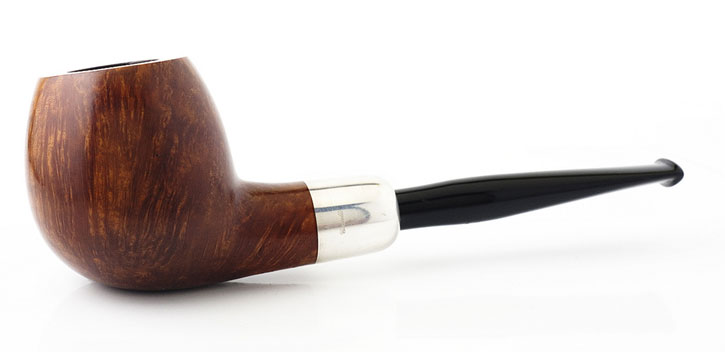
Whilst true that a pipe made with care and skill, with great attention paid to every detail, has a higher probability of becoming a wonderful smoker than one haphazardly constructed from random briar and consigned to the basket on the counter of a local mall tobacconist (if there is such a thing anymore), it has not always been the case that the high-grade acquisition will smoke like aces, or that the basket briar would have been better left behind. The rules guarantee nothing beyond decent smouldering of the shredded leaves we stuff our pipes with.
A pipe does not have to dazzle to become a trusted smoke, a favored companion. I return to the old billiard that started this rant. Some pipes have their own intrinsic, hidden beauty that defies superficial glances, and only reveals itself to those who will spend the time to look deeper. In a quest for the latest and greatest, the most breathtaking examples of briar artistry, I think a great many of these jewels are overlooked. And, more is the better for those of us with more modest means and gentle hearts, as can result in some true bargains finding their way into our racks.
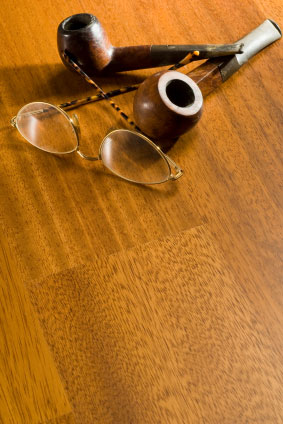 Why are we so easily seduced by the clichéd newspeak, the use of so many words that say so little? Because we live in an impatient culture and have excessive constraints placed upon our limited time. We want answers at the click of a button, and rarely have the focus or the energy left at the end of our busy days to work towards that deeper knowledge from which we can synthesize our own understanding. So, even though it has drifted perilously adjacent to meaninglessness, there is some comfort in this rhetoric. It sits us at the same table, and without engaging too deeply, gives us something with which to break the ice on forums and at pipe shows. The things that really matter, like what the pipe maker does to his wood to make his pipes smoke well, or his sense of aesthetics, of form and balance, or from where his inspiration is drawn, or the philosophy behind what he feels makes his pipes special requires something different. It requires greater effort. It requires a different approach to research and study. It requires the cultivation of a rather different vocabulary. To the vast majority of us, who would just as soon simply sit back and enjoy our pipes, there may be little reward for all that effort, and for others, it would soon simply become tiresome.
Why are we so easily seduced by the clichéd newspeak, the use of so many words that say so little? Because we live in an impatient culture and have excessive constraints placed upon our limited time. We want answers at the click of a button, and rarely have the focus or the energy left at the end of our busy days to work towards that deeper knowledge from which we can synthesize our own understanding. So, even though it has drifted perilously adjacent to meaninglessness, there is some comfort in this rhetoric. It sits us at the same table, and without engaging too deeply, gives us something with which to break the ice on forums and at pipe shows. The things that really matter, like what the pipe maker does to his wood to make his pipes smoke well, or his sense of aesthetics, of form and balance, or from where his inspiration is drawn, or the philosophy behind what he feels makes his pipes special requires something different. It requires greater effort. It requires a different approach to research and study. It requires the cultivation of a rather different vocabulary. To the vast majority of us, who would just as soon simply sit back and enjoy our pipes, there may be little reward for all that effort, and for others, it would soon simply become tiresome.
Pipe smoking is an art, and like any art, it is a largely personal journey. It takes time to learn how to do it, how to appreciate it, how to best work it into our lives in a way that is comfortable for each of us. For some, a corn cob stoked with some fine burley is the perfect grease for sticky days. For others, the aesthetic beauty and exquisite craftsmanship exhibited in a beautifully grained high-grade pipe tightens the trousers. Some like their tobaccos fresh, young and exuberant, others, long-aged, with the rough edges polished off. Some love the candy shop smells of aromatics, others, the campfire and leather of latakia. As an old N’awleans friend used to say, “It’s all good.”
When reading all the advice, all the theories about turbulent versus laminar airflows and Reynolds numbers, the age of the briar, and whether or not the coating helps the break-in or hinders it, and what tobacco is best for a given bowl size, remember that we are all human, and we easily become invested in our hypotheses, clinging to them like ivy clings to stone walls. We tend to design our experiments and seek out sympathetic support in such a way as to amplify what we want to believe. (The scientific community uses peer review to keep their work honest. We have no similar system.) So, beware to mind the credibility gap. Your experience may be very different from another’s, and that’s as it should be. We have different tastes, different goals in pipe smoking and different approaches. If we leave the rhetoric out of it, and approach things with civility, this fact will give us something truly interesting to talk about on forums or at the next pipe show, and I, for one, look forward to that. Fumus in pacem.
Your turn.
-glp
NOTE: 1. I recall a particular maker who was touted by one of the “experts” as using only the absolute best briar blocks from Bo Nordh’s woodpile. Does anyone really believe that Bo would have sold, for $75, a block of wood that he might otherwise fashion into a $10,000 pipe? Considering this meme was repeated around the webs for years, at least a few people did.
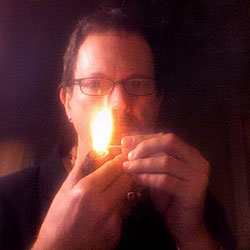 Since 1999, Gregory L. Pease has been the principal alchemist behind the blends of G.L. Pease Artisanal Tobaccos. He’s been a passionate pipeman since his university days, having cut his pipe teeth at the now extinct Drucquer & Sons Tobacconist in Berkeley, California. Greg is also author of The Briar & Leaf Chronicles, a photographer, recovering computer scientist, sometimes chef, and creator of The Epicure’s Asylum. See our interview with G. L. Pease here. |















Quit complaining, Mr. Pease, and get back to making awesome tobacco blends! I loved the article.
So what you’re saying is… I’m right and you’re wrong. 🙂 Another fine article Mr. P. Best part of my work day is reading your mind juices that find their way to the web. Good Smokes Ahead.
Thank you, Baron. If people keep buying them, I’ll keep making them!
You done schooled us Mr. Pease, many thanks!
Amen, brother.
Mind that gap. Thanks for another thought provoking article!
Well said. Those people who were saying the same thing 10 years ago were “heretics”.
Blessings of your heart, you blend great tobacco Greg.
: Welcome back my friends to the show that never ends, we’re so glad you could attend – come inside, come inside! :
Ya know? It’s that rhetoric that you mention that causes a very difficult time choosing a pipe ond or tobacco online. Not so much tobaccos but the advertising that goes with our potential loving briars. And I say not so much tobaccos because one simply can go to tobaccoreviews.com and be inundated with improper grammar, poor spelling, personal opinion disguised as objective review and an onslaught of people using larger words than they have a right to. At the same time, I like to lean towards the worst reviews when considering a tobacco I’ve never smoked, they just seem more honest. They seem to get their point across though. Choosing pipes on the other hand is a crapshoot. with all the adjectives and descriptions which amount to a moot point in most cases.
Is there a reliable soource to go to rather than having to roll the dice?
ANother fine article you have there, Mr. Pease. I always enjoy your viewpoints. It should be an axiom, btw, that one cannot know how well a pipe will perform except through usage, that is, to smoke it! My poison might be someone else’s nectar. Seems to me that it doesn’t matter what price one pays, nor what “system” one uses, there is no guarantee.
Great article, GLP. It fits perfectly with pipe related things that I’ve been pondering lately.
As with women, I cannot explain certain love for certain pipes. Part of the grand mystery. Thanx for your article.
Well, this article is a bit stormy — I couldn’t suppress a mental image of you as a chimera of sorts: Mark Twain’s head and Andy Rooney’s …well, never mind.
.
I hope you get over your flu, or snit, or whatever. Thanks for a fun read and great photography. 🙂
Interesting article. Just a minor editing thing that ought to be corrected: it’s wood, it’s stem.
[Thanks, Jackson. That’s one of my pet peeves, too. I blame the flu. It’s been fixed. -glp]
At last, someone with clout in the tobacco world says what many of us mere mortals have been saying for years. Good rant Greg, and much appreciated. get well soon, but never recant.
Having smoked a pipe with great pleasure for many years I entered the realm of Cyberia.
The discovery that my best pipes were junk compared to the foreign art works proclaimed by all the real pipe smokers and my favourite tobacco blends were smothered in perfume from an old lady living in the English Lake District or too strong and dry for modern aesthetic tastes, let alone those Virginias soused in vinegar or ketchup by some company in the States or worse – my favourites – were blended by some guy in California so green as to be suitable for smoking only when the next Ice Age arrived, completely ruined my enjoyment.
Fortunately, on the advice of a well known therapist, I purchased a gold tamper and all became well again!
PS: the advice about the gold tamper came with a small footnote about learning to think for one’s self!
I found myself wholeheartedly agreeing with this sentiment, a notion that I just expressed to both Alex Florov and Scott Klein this weekend, perhaps less eloquently than Mr. Pease.
There seems to be a collection of experts whose opinions are taken as gospel without ever being tested. Please don’t misunderstand, I consider myself lucky to have such quick access to so many people with incredible fonts of knowledge.
Despite my gratitude, I still consider myself a skeptic. I hear a theory and, while I may hope that it is true, I cannot proclaim its truth value until I have tested it for myself. In this way, there is still a great deal that I have to learn and can only rely on the accounts of others. I cannot, for example, testify as to the flavor difference between fresh Virginia and 20 year old Virginia. I can hypothesize as to the difference, but I cannot say for certain, as I have never had the chance to taste it for myself.
The age of the internet is a blessing in many ways: we have access to pipes from all over the world, opinions and insights from so many different people, and camaraderie where we otherwise might have had none. One of the few, but important, downsides is, as Mr. Pease said, the danger of information becoming fact through repetition instead of through testing. Person A asserts something, which is then repeated by People B through X, because of the ethos used by Person A. Now, when Person Y comes across so many people repeating the same information, they have no reason to assume it isn’t true.
I suppose the greatest lesson to learn from this article is to take advantage of the information that is out there, but do not assume its truth without testing it for yourself. After all, one of the greatest lessons in pipes is that what is true for one person (Balkan Sobranie is divine, for example) might not be true for another.
It’s just like reading resumes. Everyone is a “hard worker”, a “team player”, and a good “communicator”.
Ya still don’t know what you’re talking about.
In a somewhat related vein, I’ve noticed,(I’m still very new here)that many of us use a bit more jargon than may be necessary. “In group speak”. Thanks
How much you wont fer that magic billiard you got there muchacho
“razor-grained pierced-elephant-blowfoot-squashed-fishdogs”…How did you know this was the exact shape I was looking for!? Great article as usual sir!
Pardon moi, (davidg) my brief comment was without the avatar.
Thanks much.
I have a cheapo reject that looks awful but smokes like a dream. Now I can point to your article if asked why it sits right on the shelf with my treasures. I dont care that it is bored crooked and has unremarkable grain, it is one of my best pipes!
Thank you for another great read!
Aren’t mouflons already “feral” by definition?
We have everything we need to make our choices–a nose, a tongue, a palate, tastebuds, eyes, and hands and fingers to feel with. My dog told me so. He added to forget the ears, we humans are puny in that department, and that that was his specialty.
Middle aged men, the main demographic of the pipe smoker, love nothing more than the chance to overcomplicate and overanalyze a hobby until it becomes a maze of differing opinions and entrenchments over which they can conduct an war of opinion. Smoke your pipe and don’t believe the hype would probably be the best stance for a non combatant.
Mmmmmmmmmmmm…only middle-aged men? Is that a proven fact or is it a supposition based on stereotype?
Fantastic article Mr.Pease!!!
You have communicated perfectly that the human factor of personal preference cannot be underestimated.
I discovered the essence of your article when one day I suddenly came to the realization that the pipe I pulled off the shelf most frequently was the homemade piece I created from a block of Rosewood I found in the scrap box in my wood shop and a two dollar push-in acrylic stem.
I have other much more expensive pipes but there is just something I cannot explain that keeps me gravitating toward this pipe.
Ahh Greg you’re gonna hurt my feelings, man. How the hell am I supposed to sell a pipe that’s made from just regular old plane-jane briar? How could I sell a stem that wasn’t finest German ebonite?
And to think that all the money I’ve wasted on these cutters, trying to get them to skim the best blocks for me has been wasted. And throwing out all the deficient blocks instead of filling the fissures and selling them anyway… what a silly boy!
Hell, come to think of it, I could cut a pipe that will stay still in your teeth if you really wanted. Maybe that can be my new angle, cuz Alfy got the oil-curing thing.
But it’s all right Boss: some day you’ll get a really decent pipe, engineered and all, and take all this stuff back as blatant heresy.
The smoking qualities of a pipe are very important and quite understandably a large part of conversation among pipe smokers.
However, fortunately for the artists there is a segment of society that does appreciate what Sasquatch is communicating.
I recall reading an article a while back that indicated that there is a segment of pipe collectors the do not even smoke pipes and yet still collect pipes only for their artistic and aesthetic appeal. Many are behind glass or displayed on fireplace mantels or executive credenzas that will never see a match and are there purely as displayed works of art. These pipes may or may not be fine smokers, but to some of these folks smoking quality is not even an issue or even a thought. Instead shape, color, and grain is everything and some are willing to pay several thousand dollars for a very unique piece.
The very same holds true in fine furniture, automobiles, or the art world. You can buy a $30.00 table from your neighborhood furniture store that will function nicely as a table.
Or, you can buy a $10,000.00 hand crafted one of a kind custom table made of an exotic crotch feather hardwood that will dazzle the visual senses. Both will hold your glass of tea just the same and do it no better than the other.
With cars…you can buy a Chevy Impala, or a Cadillac. Both will get you to the store and back just nicely. And there is the segment of society that will haul a collector car from coast to coast in a trailer….roll it out….and dust it off so many can ooooooo and aaaaaa. And funny thing they will never drive the car. The junk yards, parts stores, and aftermarket supply houses are very grateful for these kinds of people.
The field of musical instruments is the same way. You can buy a plain jane Martin guitar for a few hundred bucks, or, you can buy a hand crafted guitar by Dave Plummer made of Hawaiian Koa or flame grade maple starting at $6000.00 and the Plummer will not sound any better than the Martin. Both are fine instruments…..but the Plummer is a work of art. I know a man that does not even play guitar that has a Plummer guitar on display in his home like someone else would display an original oil painting. When he first saw the beauty of the wood grain and craftsmanship he just had to have it. And he paid huge bucks for it. And he will break your legs if you touch it.
Thank goodness for all involved that the pipe is many things to many people. And thank goodness that God created a gnarly root ball that on an occasion has within it the kind of grain that will dazzle our socks off and that some are willing to pay dearly for.
My two cents worth.
Harkpuff
I never cared for “handmade”. If made properly by CNC machines, it’ll be less wasteful and more consistant on the company’s part once they got the perfect dimensions.
Rough drafts are all done on engineering software on the computer. Final product will not portray the same emotions, but I’m function over emotional and visual arts.
OMG, you mean after 32 years of pipe smoking,you are telling me that the wood,stem, shape and bowl has an effect on the way my pipe smokes? Wow, what I can learn from the internet. Well, with that said I think I will fire up my factory second Grabow with some Borkum Riff and hope it still smokes well. Thanks for the good read Greg.
Greg..it sounds like you were describing the majority of my pipes in the beginning of the article. I’ve got Savinelli whistling basket pipes that smoke like gems. Unopened closed hole pipes that keep me from absetoesizing (Funn Dictionary) my tongue with Va.s, which I belive sometimes is the purpose of the Peterson P-Lip. Being a musician there are many instruments which sound better than others,without the use of amps and microphones, and there is an ease in playing for the player,unbeknownst to the peole on the other end,audience. I imagine the same may apply to pipes…one man’s bread…?
Funn
One of the best read I have had in a long time. Thanks for making me take a step back from my pipe acquisition and consider why I got into pipes in the first place.
Is it possibly the nature of the pipe smoker that we sometimes think too much.
Just a thought!
Harkpuff
Great article!
Great article!
The best smoking pipe I own cost less than $35.00. This is not just a problem in pipes but a problem that belongs to many things in life. I have been fly fishing for 35 plus years, and the best casting rod I own cost upwards of $300.00, making it a mid priced rod, but it brings much pleasure and enjoyment same as my cheaper pipe. Its all about what brings true enjoyment to each of us.What brings you true enjoyment? Thanks for a great article.
Here, here, well spoken (written)! The massive dungheap of overheated phrase and snotty, self serving, downright bitchy prose is what’s wrong with ‘the pipe press’ of today. Sometimes, it ‘just all comes together’. A good blend, a well used and well cared for pipe of undistiguished breeding, and a good pack, neither too tight or too loose, can yeild up trancendant results. There’s too much backbiting and spite going on these days. With the Nanny State breathing down our necks all the time, it’s the last thing we need. Why, just the other day, I’m on the street, well in the ‘free zone’ away from an office builing and lit my pipe. A cloud blew past her snippy little nose and this awful woman gave me a look that would have pitted stainless steel. She said ‘how could you’? Just then a stinking diesel bus passed us, and farted a cloud of diesel stink at us. I asked her, “Would you prefer that Diesel stink? If not, why don’t you chase after him and give him grief?” Stupid cow!
Loved the article…I have an old post-war Mayfair prince that you wouldn’t look at twice that is the best smoker in my collection. I wouldn’t trade it for one of Bo’s pipes it has been my old friend for many years.
Quite right. I’ve got a few pipes ‘with no pedigree’ that smoke as well as my Petersons or Ben Wades. I’ll call it ‘Briar Exceptionalism’ and be done with it. And, in answer to a poster who mentioned the pipe crowd as ‘primarily middle aged men’, what’s wrong with that, anyway? Frankly, once ‘the kids’ get in on something they mess it up with ‘faddish nonsense’ as they are doing now with cigars. Flavored cigars? And I’m not talking classical flavorings like rum, vanilla, cognac and anise (DiNobli anyone) but peach, grape and all manner of God-awful stuff. If you’ve got to drag your tobacco through the candy counter, get yourself a chocolate cigar or some candy cigarettes and be done with it, I say…